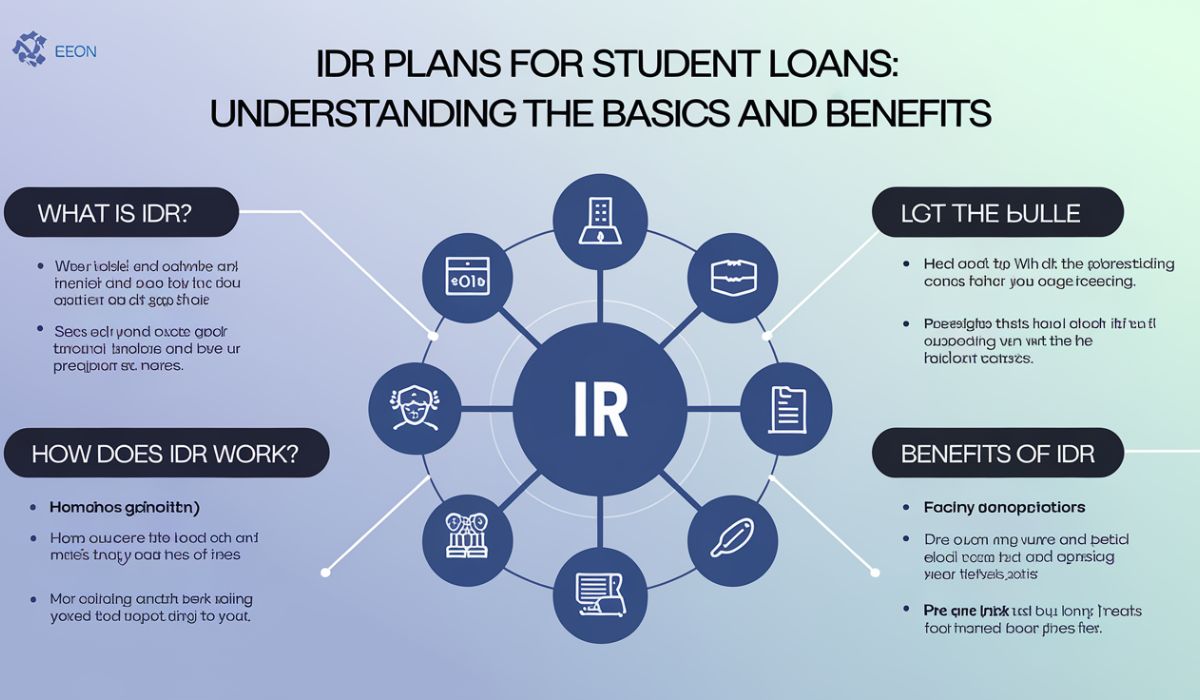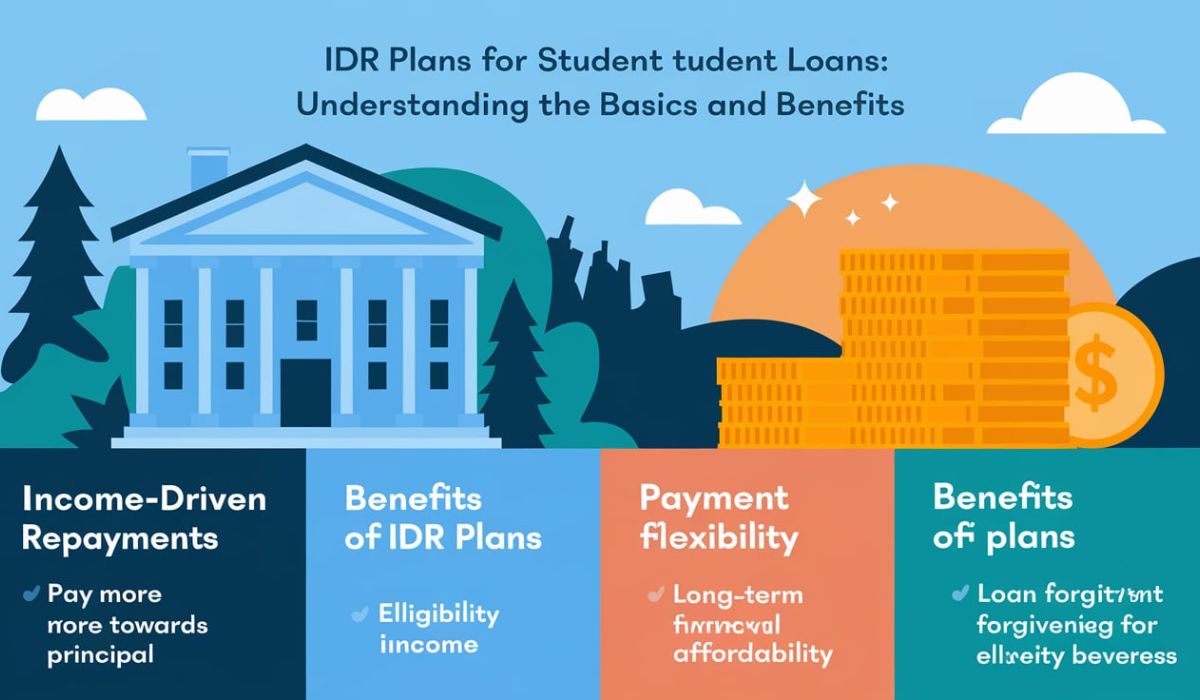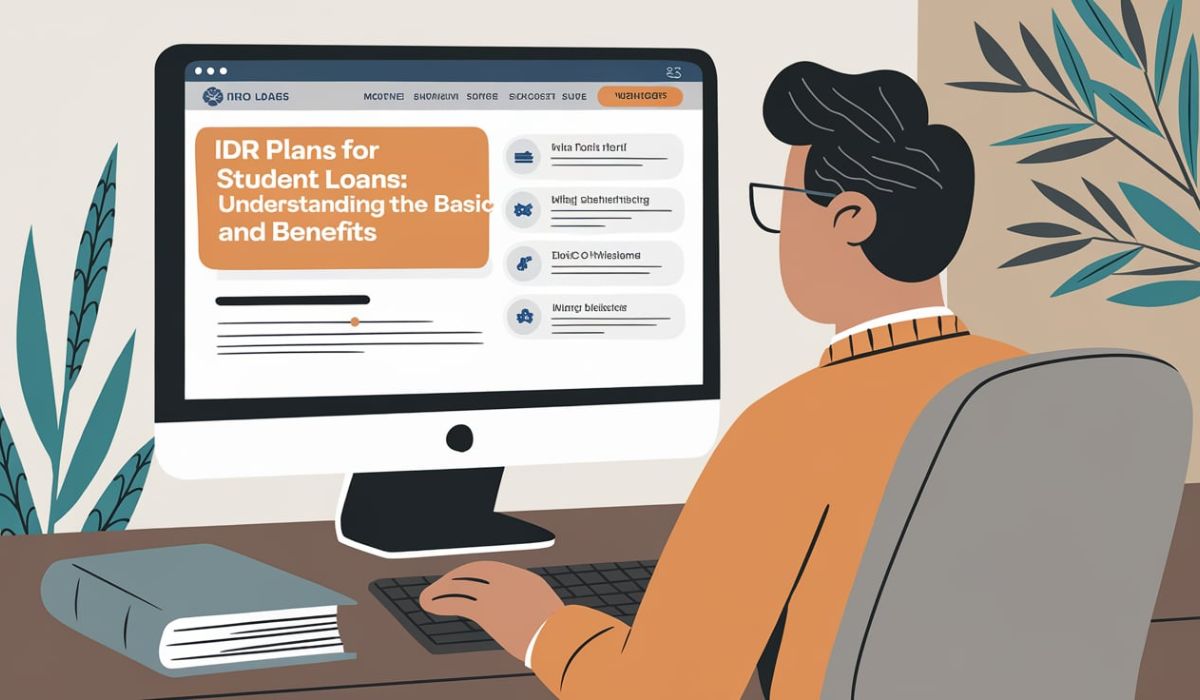Student loans can be a heavy burden for many graduates, and the process of repaying them can often feel like an overwhelming journey. But what if there was a way to make this journey a bit more manageable? That’s where Income-Driven Repayment (IDR) plans come in.
If you’re someone who’s struggling with student loans or simply want to learn more about your repayment options, understanding IDR plans for student loans could be a game-changer. These plans are designed to make your monthly payments more affordable based on your income and family size, giving you a chance to take control of your finances without the constant pressure of high monthly payments.
This article will dive deep into the different types of IDR plans, how they work, and why they might be the solution you’ve been looking for.
What Are IDR Plans for Student Loans?

Income-Driven Repayment (IDR) plans are a set of repayment options available for federal student loans that adjust your monthly payments based on your income and family size. Instead of sticking to a fixed payment amount, IDR plans calculate your payment as a percentage of your discretionary income, making it more affordable.
The best part about IDR plans is that they help borrowers who are experiencing financial difficulty by reducing their monthly payment amounts, which can provide some breathing room as they work towards paying off their loans. In some cases, the remaining balance on your loan may even be forgiven after a certain period, depending on the plan.
How Do IDR Plans Work?
IDR plans work by assessing your monthly payments based on your income and family size. Each year, you must provide updated information about your income, and the government will adjust your payment accordingly. Your payment amount will be recalculated, and in many cases, it will decrease if your income has fallen or if you have a larger family.
Since IDR plans are tied to your income, it’s important to keep the government informed of any changes to your financial situation. You may be asked to submit tax returns or pay stubs as part of the verification process.
Types of IDR Plans for Student Loans
There are four main types of IDR plans, and each has different eligibility requirements and features:
1. Income-Based Repayment (IBR)
IBR is one of the most commonly used IDR plans. Under IBR, your monthly payment is generally capped at 10% to 15% of your discretionary income. If you’re a new borrower (as of July 1, 2014, or later), your payment will be 10% of your discretionary income. If you’re not a new borrower, your payment will be 15%.
2. Pay As You Earn (PAYE)
PAYE is similar to IBR but is typically more beneficial for borrowers who have a lower income. PAYE caps your payments at 10% of your discretionary income, but it has stricter eligibility requirements.
3. Revised Pay As You Earn (REPAYE)
REPAYE is an updated version of PAYE, and it offers a lower payment rate for most borrowers. Payments are capped at 10% of your discretionary income, and the program allows for loan forgiveness after 20 years for undergraduate loans and 25 years for graduate loans.
4. Income-Contingent Repayment (ICR)
ICR is the least commonly used IDR plan, but it’s available to all federal loan borrowers. Under ICR, your payments are calculated based on your income and family size, and they’re capped at 20% of your discretionary income.
Eligibility for IDR Plans

To qualify for an IDR plan, you must have federal student loans. If you have private student loans, IDR plans are not an option.
In addition, you must meet certain income eligibility requirements, which vary depending on the type of IDR plan. For example, some plans require you to demonstrate a partial financial hardship, meaning that your student loan payments under a standard repayment plan exceed a certain percentage of your income.
How to Check If You Qualify:
- Review the specific eligibility criteria for each plan.
- Contact your loan servicer for help with verifying your eligibility.
- Complete the application for the desired plan to see if you qualify.
How IDR Plans Calculate Payments
The way your payment is calculated depends on the plan you choose, but generally, it’s based on your discretionary income, which is the difference between your gross income and the poverty guideline for your family size and location.
For example, if you earn $30,000 a year and your family size is two, your discretionary income would be the portion of your income that exceeds the poverty threshold. The exact payment amount will then be determined based on a percentage of that discretionary income.
This process is designed to make your payments more manageable and based on your current financial situation.
Pros of IDR Plans for Student Loans

1. Lower Monthly Payments
One of the most significant benefits of IDR plans is that they can lower your monthly payment to a more manageable amount based on your income. This can make a huge difference, especially if you’re struggling to meet your current payment obligations.
2. Loan Forgiveness
Many IDR plans offer loan forgiveness after 20 or 25 years of qualifying payments. This is a huge benefit for borrowers who have a significant amount of student debt and may not be able to pay it off within the standard 10-year repayment period.
3. Flexible and Adjustable
IDR plans allow you to adjust your payments each year based on your income, which is helpful if your financial situation changes. This flexibility can be a lifesaver if you experience a drop in income or a change in family size.
Cons of IDR Plans for Student Loans
1. Longer Repayment Period
While your monthly payment may be lower under an IDR plan, your loan term is extended, meaning you may end up paying more interest over the life of the loan. This can increase the overall cost of your loan.
2. Potential for Taxable Forgiveness
While loan forgiveness is a major perk, it’s important to note that any forgiven loan amount may be considered taxable income. This means you could face a large tax bill when your loan is forgiven after the repayment term.
3. Need for Annual Renewal
You must renew your IDR plan each year by providing updated income information. Failing to do so could result in your payments being recalculated at a higher amount, which could cause you financial strain.
How to Apply for IDR Plans
Applying for an IDR plan is relatively simple. You can apply through your loan servicer, either online or by mail. Here’s how you can get started:
- Gather Documentation: You’ll need to provide proof of your income, which could include tax returns, pay stubs, or other forms of income verification.
- Choose a Plan: Review the four IDR plans and decide which one works best for you.
- Complete the Application: Submit your application and income documentation to your loan servicer.
- Annual Renewal: Be sure to renew your application every year by providing updated financial information.
What Happens After the IDR Loan Term Ends?
Once you’ve made all your required payments under an IDR plan for the full term (usually 20 or 25 years), any remaining balance on your loan may be forgiven. Keep in mind that the amount forgiven may be subject to income tax, so it’s essential to prepare for that possibility.
Can You Switch Between Different IDR Plans?
Yes, you can switch between different IDR plans if your financial situation changes or if you find that another plan works better for you. It’s important to regularly assess your situation and make changes if necessary to ensure you’re getting the best deal.
Impact of Income on IDR Payments
As your income changes, so will your payments. If your income decreases, your payments under an IDR plan may go down, which can be a relief. However, if your income increases, your payments may go up as well.
IDR Plans vs. Standard Repayment Plans
The key difference between IDR plans and standard repayment plans is that standard plans have fixed monthly payments, while IDR plans adjust payments based on your income. If you have a stable and high income, a standard repayment plan might save you money in the long run, but for most borrowers, IDR plans are a more affordable option.
Tax Implications of Forgiven Loans Under IDR
When loans are forgiven under IDR plans, the forgiven amount may be subject to taxes as income. Be sure to understand the potential tax implications before you enter into a loan forgiveness plan.
Common Mistakes to Avoid with IDR Plans
1. Forgetting to Update Your Income
Failure to update your income information yearly can lead to higher monthly payments.
2. Not Understanding Loan Forgiveness
Some borrowers don’t fully understand the tax implications of forgiven loans. Be sure to plan ahead.
3. Ignoring Plan Changes
Sometimes, switching IDR plans may be necessary. Be sure to stay informed about changes to your situation.
Conclusion: Are IDR Plans Right for You?
IDR plans for student loans offer an invaluable tool for borrowers struggling to repay their loans. By adjusting payments based on your income, these plans provide a safety net that can make loan repayment more manageable. While there are some trade-offs, such as extended loan terms and potential tax implications, IDR plans can provide relief and a clearer path toward financial freedom.
Ultimately, whether an IDR plan is the right choice for you depends on your financial situation, your income, and your long-term goals. However, if you’re looking for an option to reduce your monthly payments and work toward loan forgiveness, IDR plans for student loans could be the solution you need.
Frequently Asked Questions (FAQs)
1. How do I apply for an IDR plan for my student loans?
You can apply for an IDR plan through your loan servicer by submitting your income information and choosing the plan that fits your financial situation.
2. How is my payment calculated under an IDR plan?
Your payment is calculated based on your discretionary income, which is the difference between your gross income and the poverty guideline for your family size.
3. Is loan forgiveness really possible under IDR plans?
Yes, after 20 or 25 years of qualifying payments, your remaining loan balance may be forgiven under most IDR plans.
4. What happens if I don’t update my income information?
If you fail to update your income, your payments may be recalculated at a higher rate, and you could lose eligibility for the IDR plan.
5. Are there any tax consequences for loan forgiveness?
Yes, the amount forgiven may be considered taxable income, so it’s important to prepare for potential taxes when your loan is forgiven.
